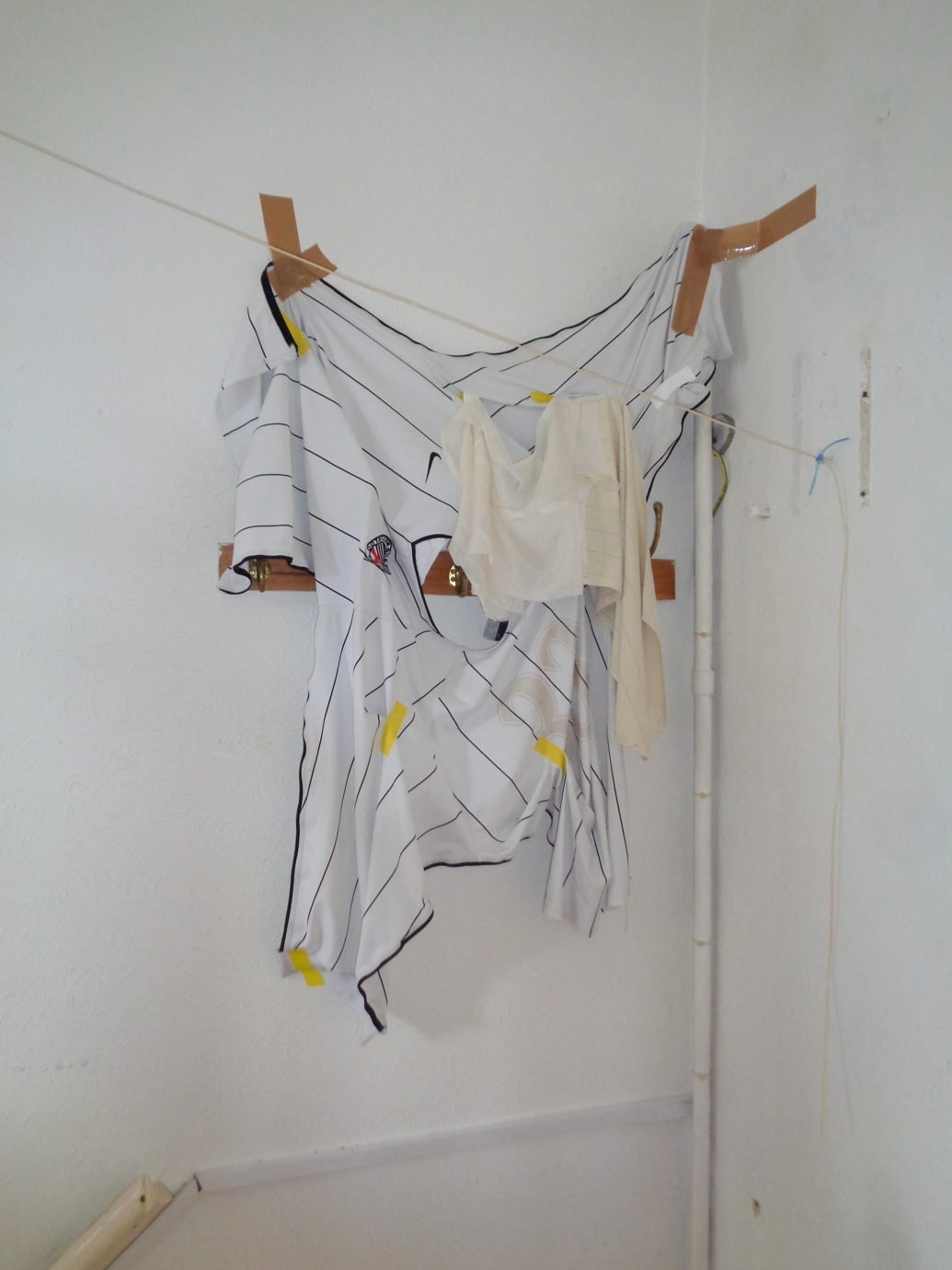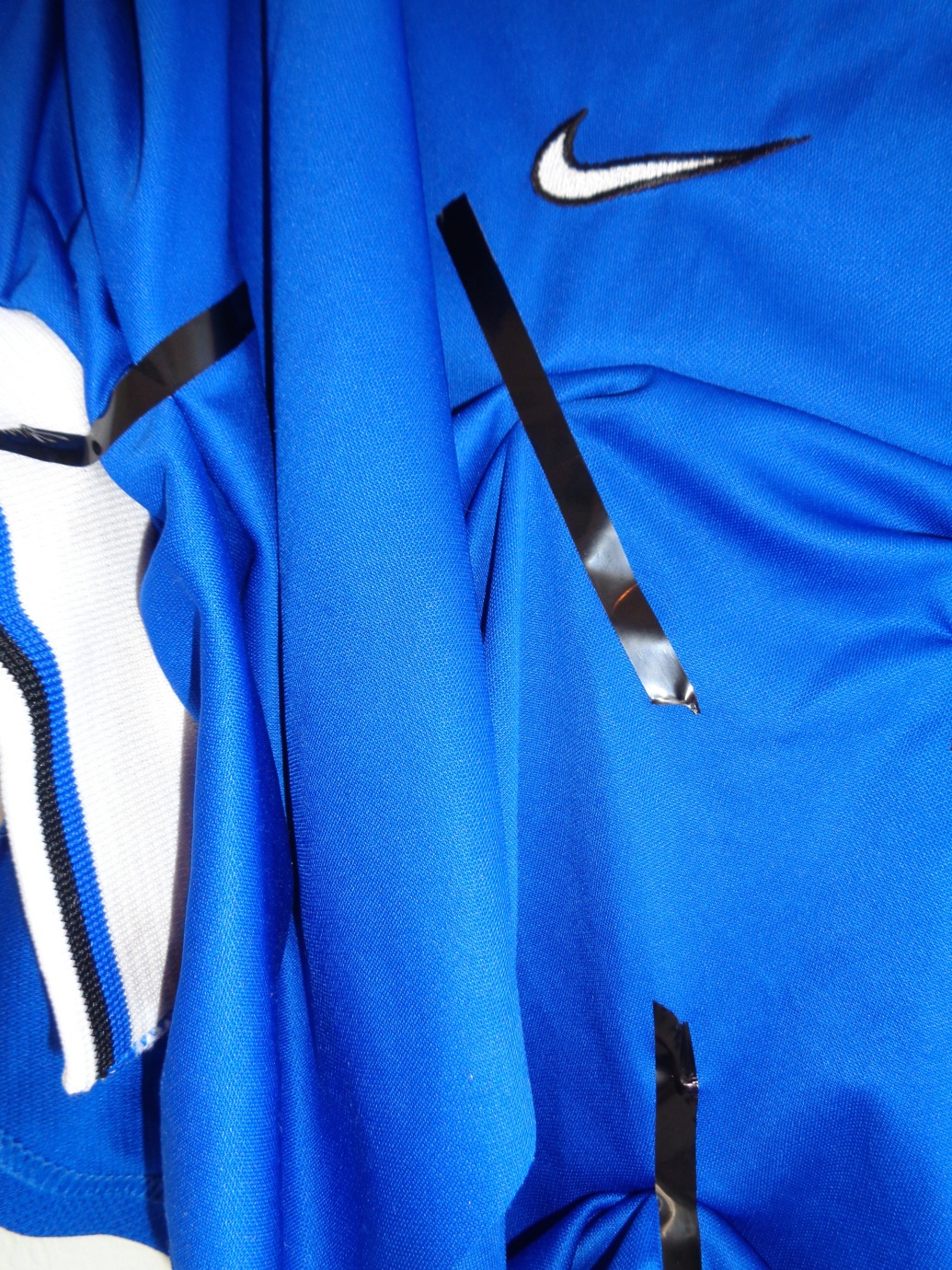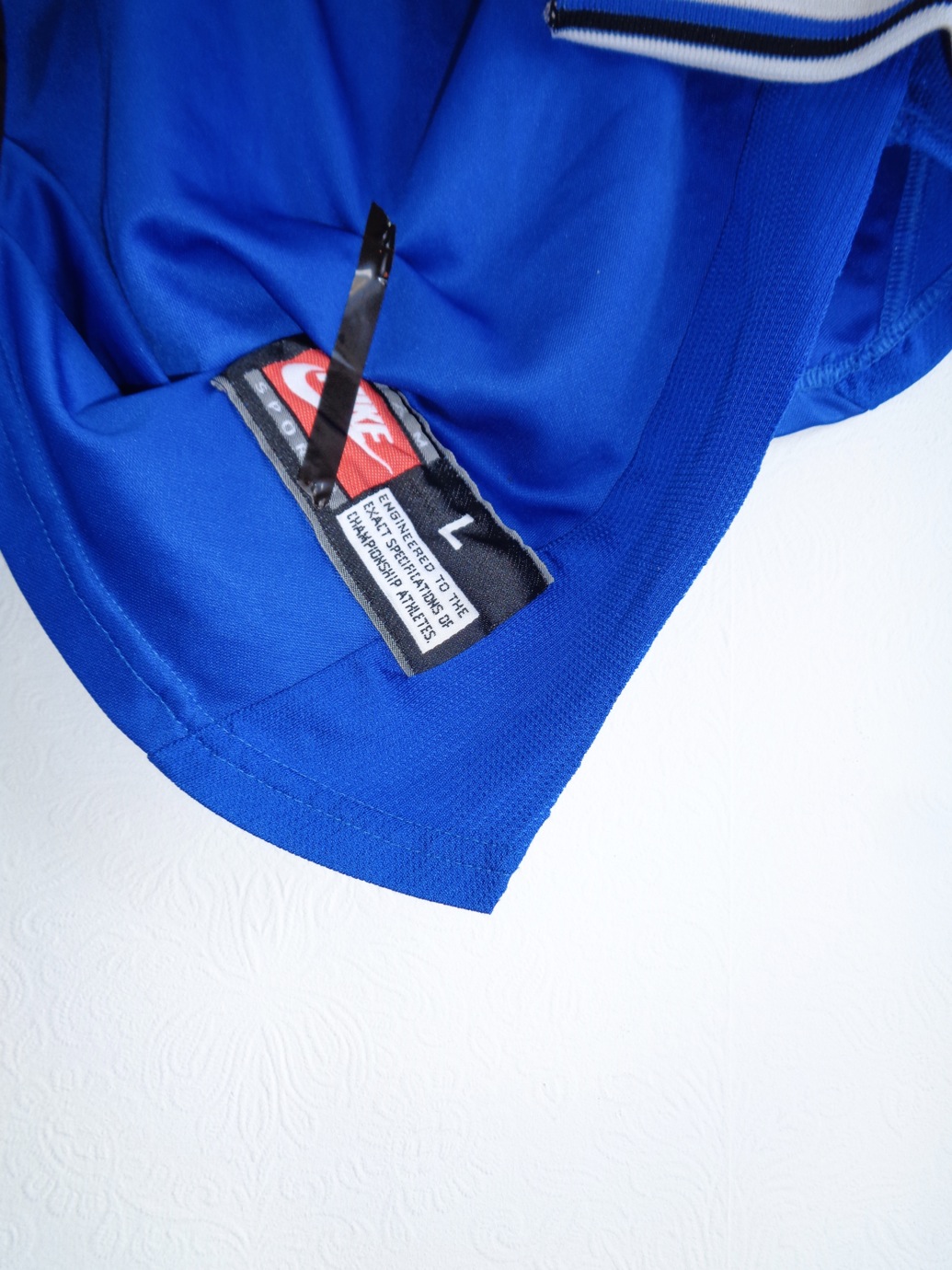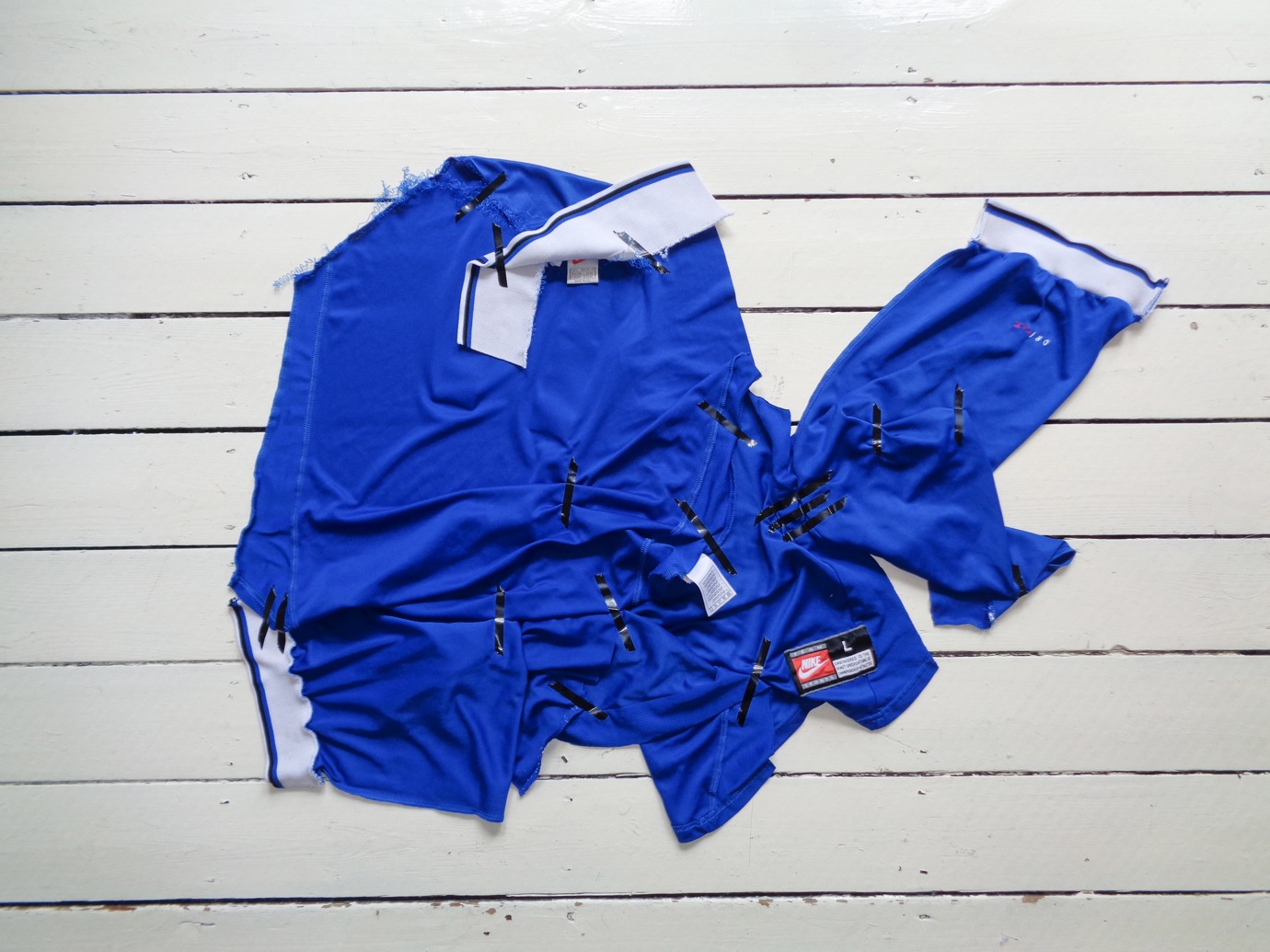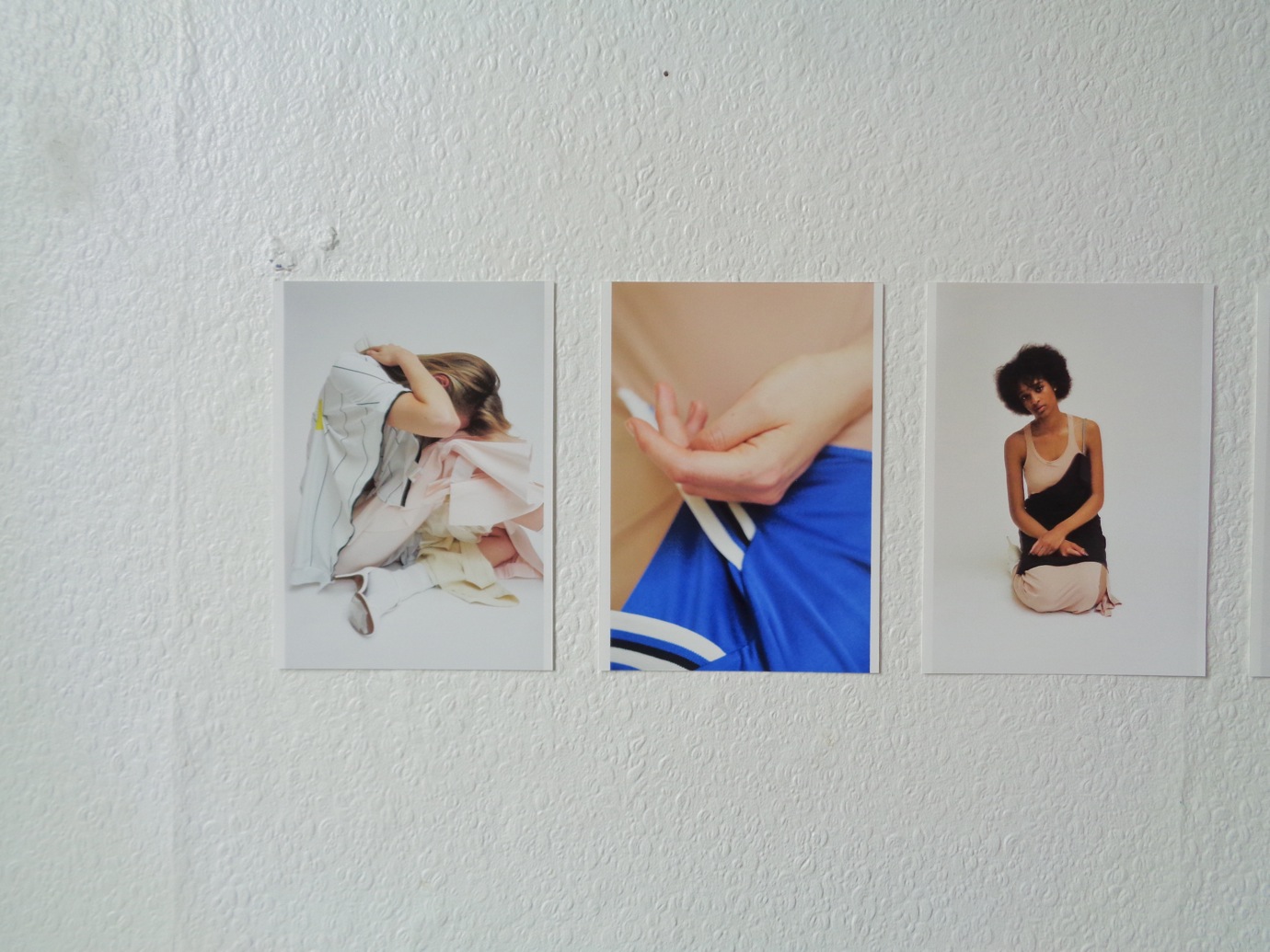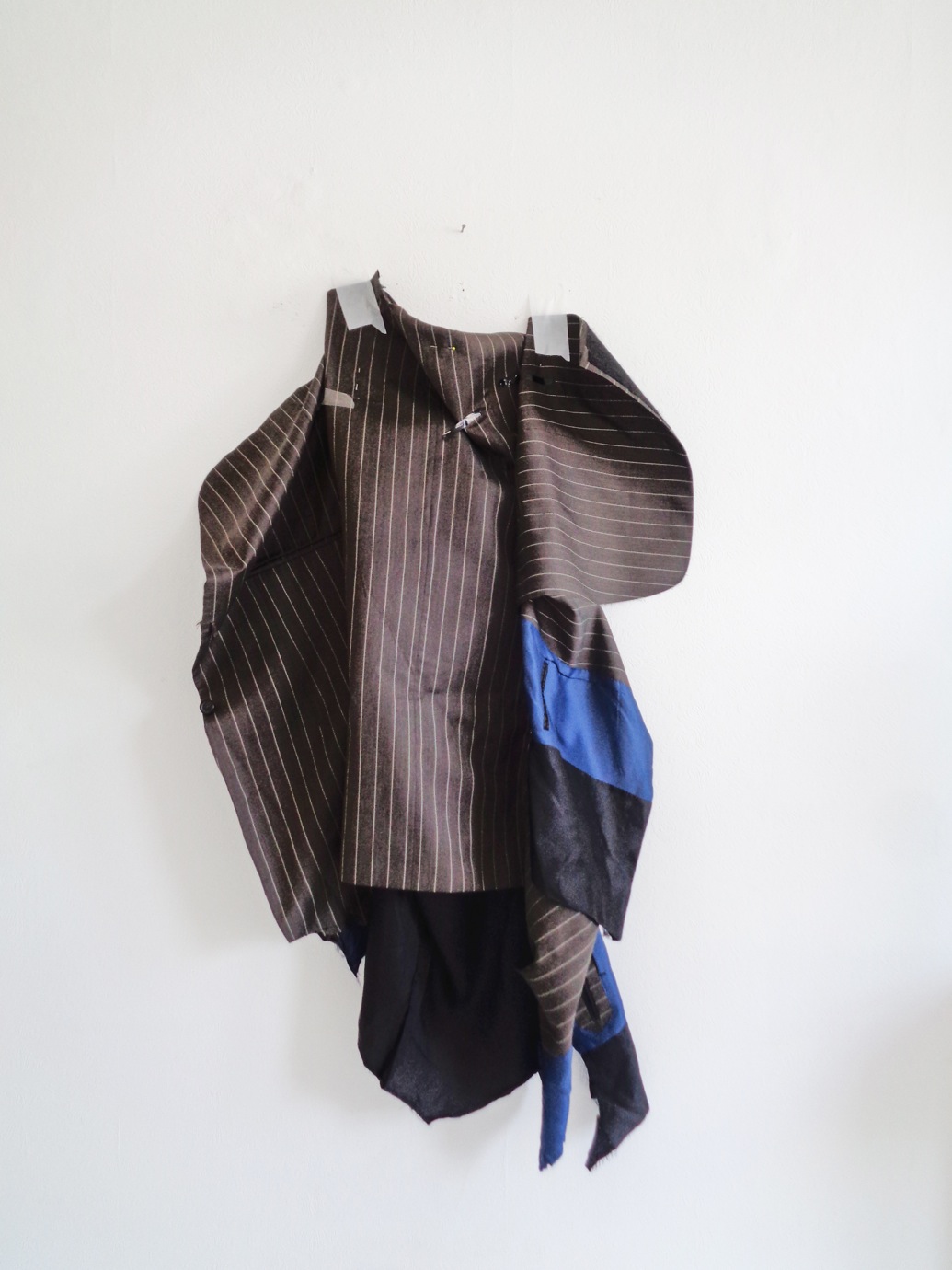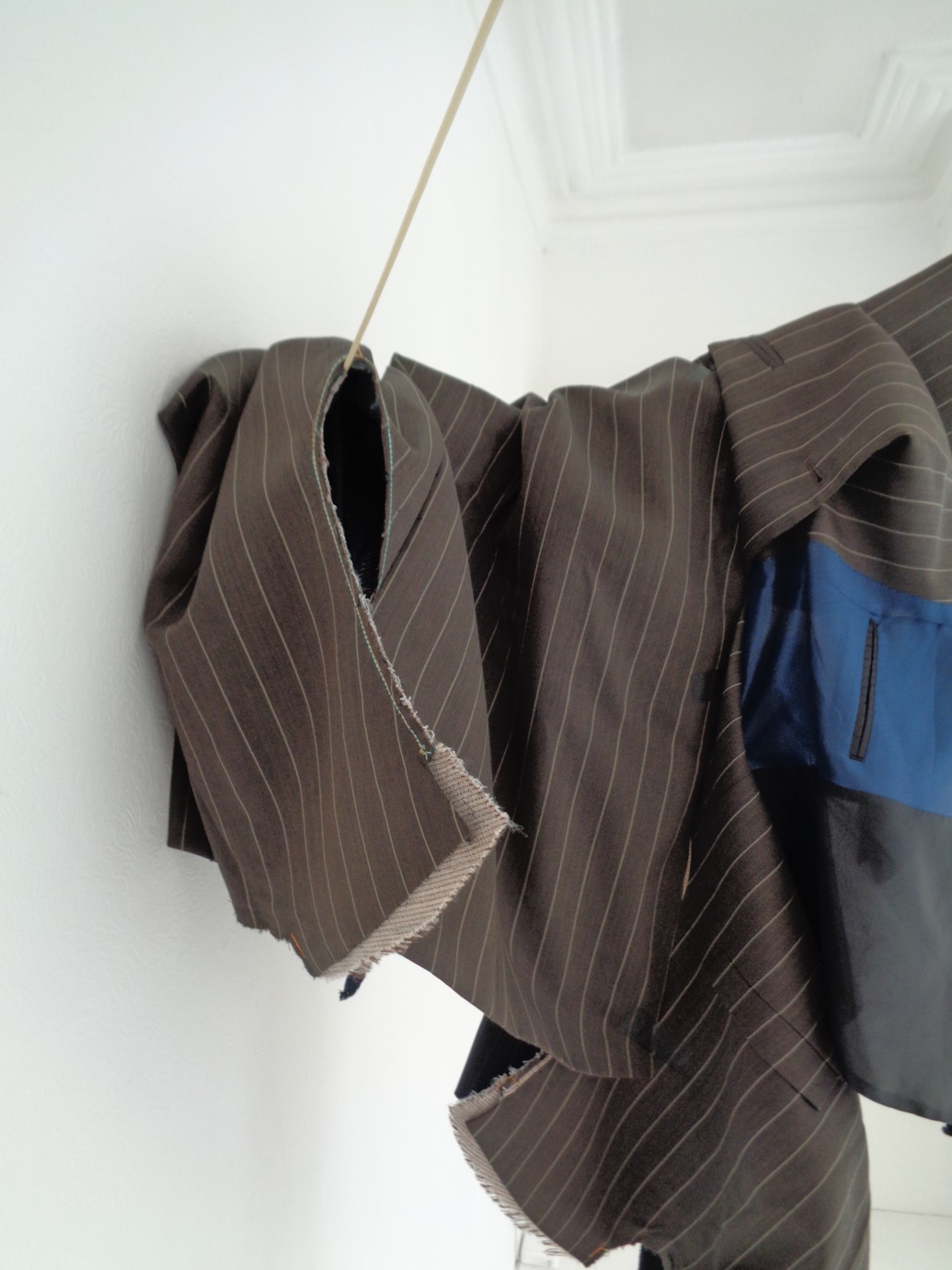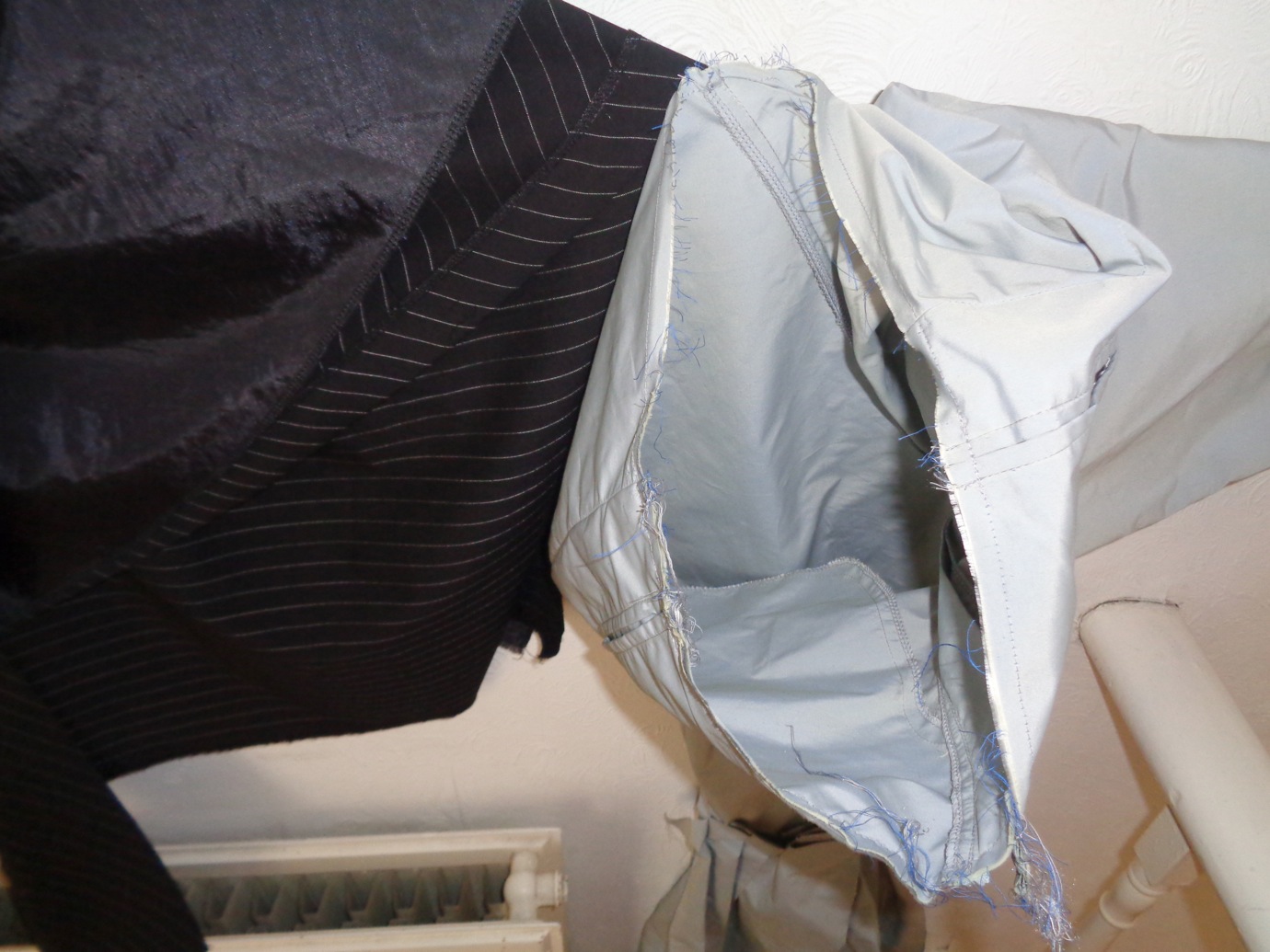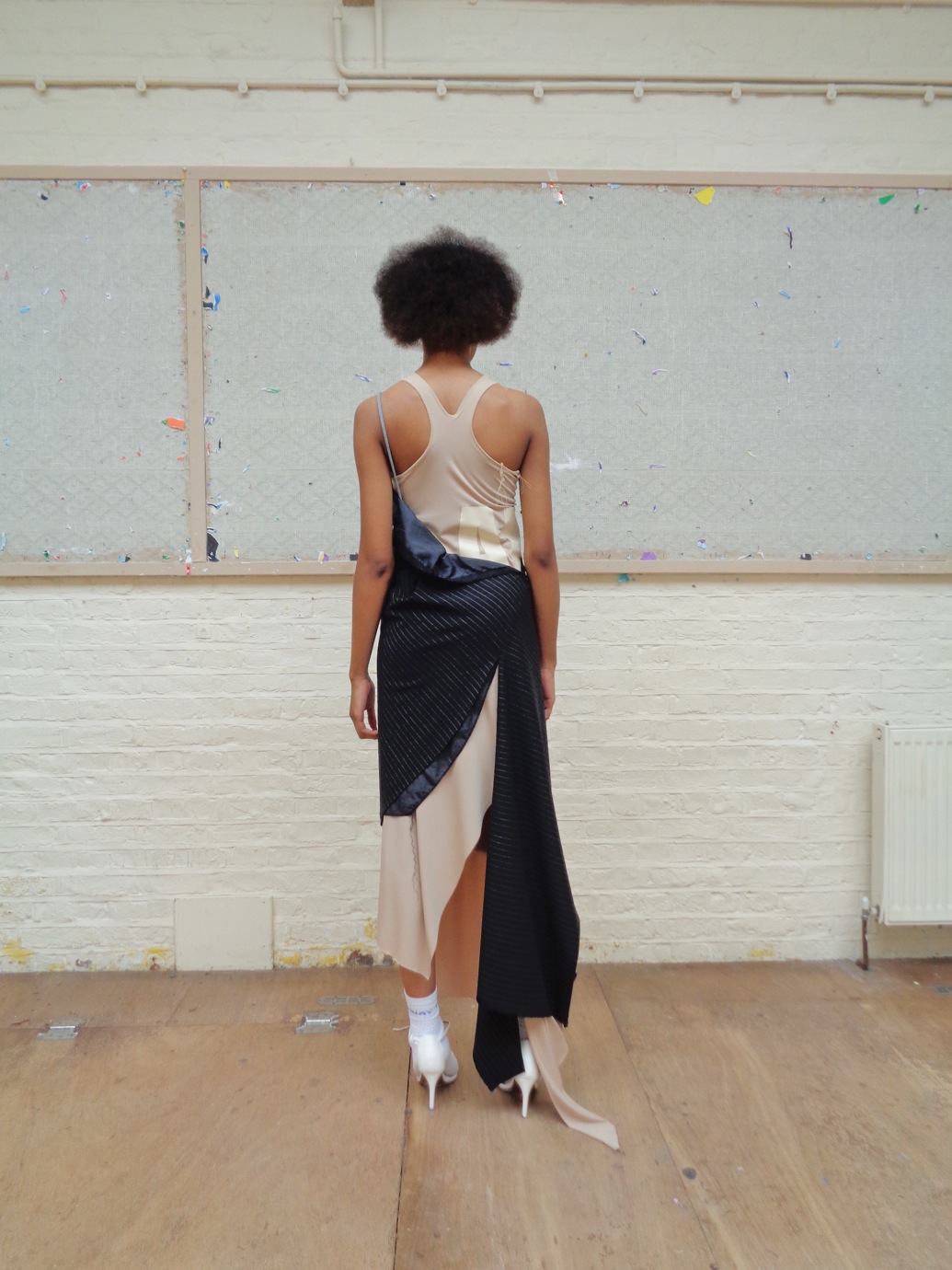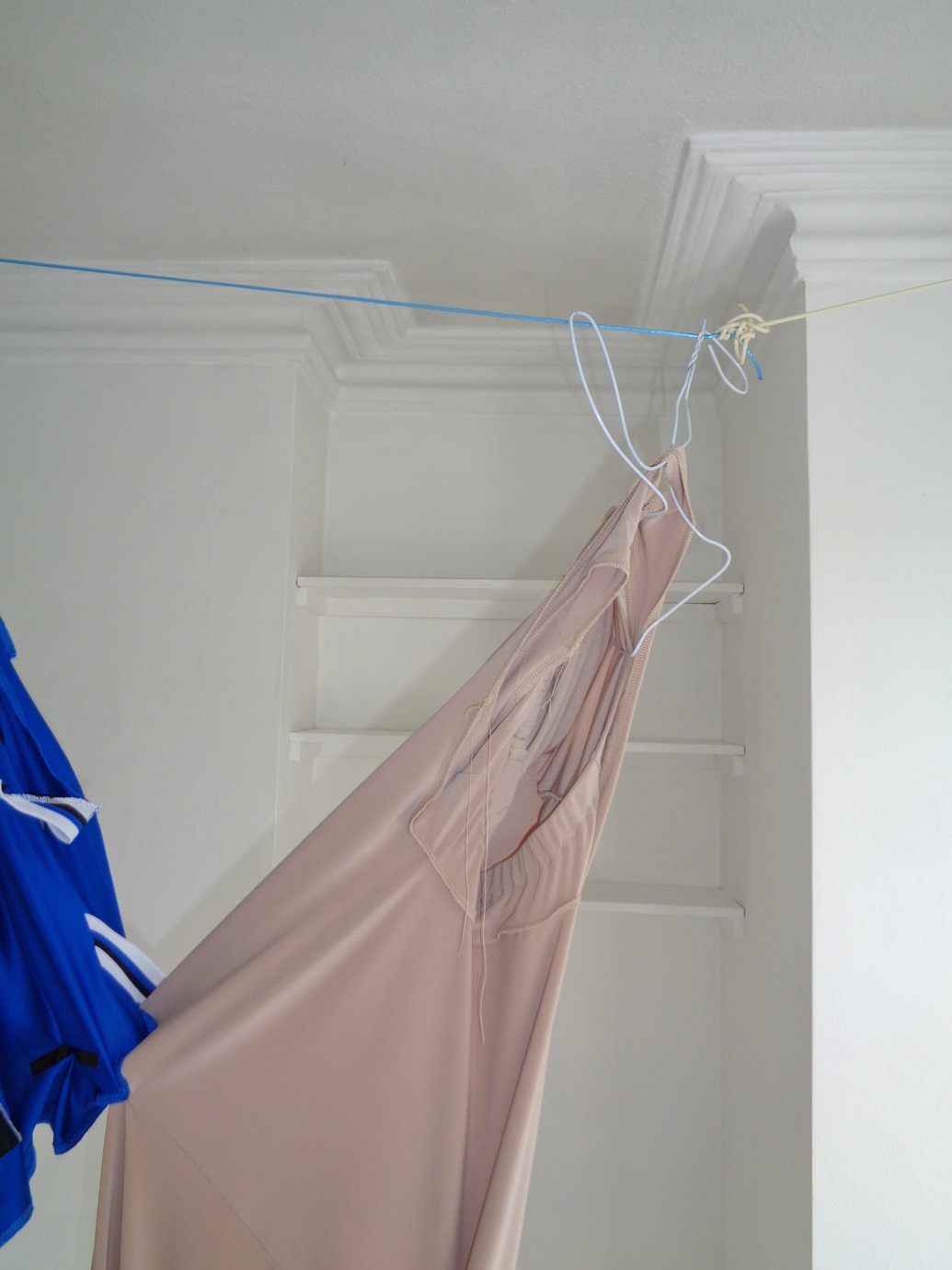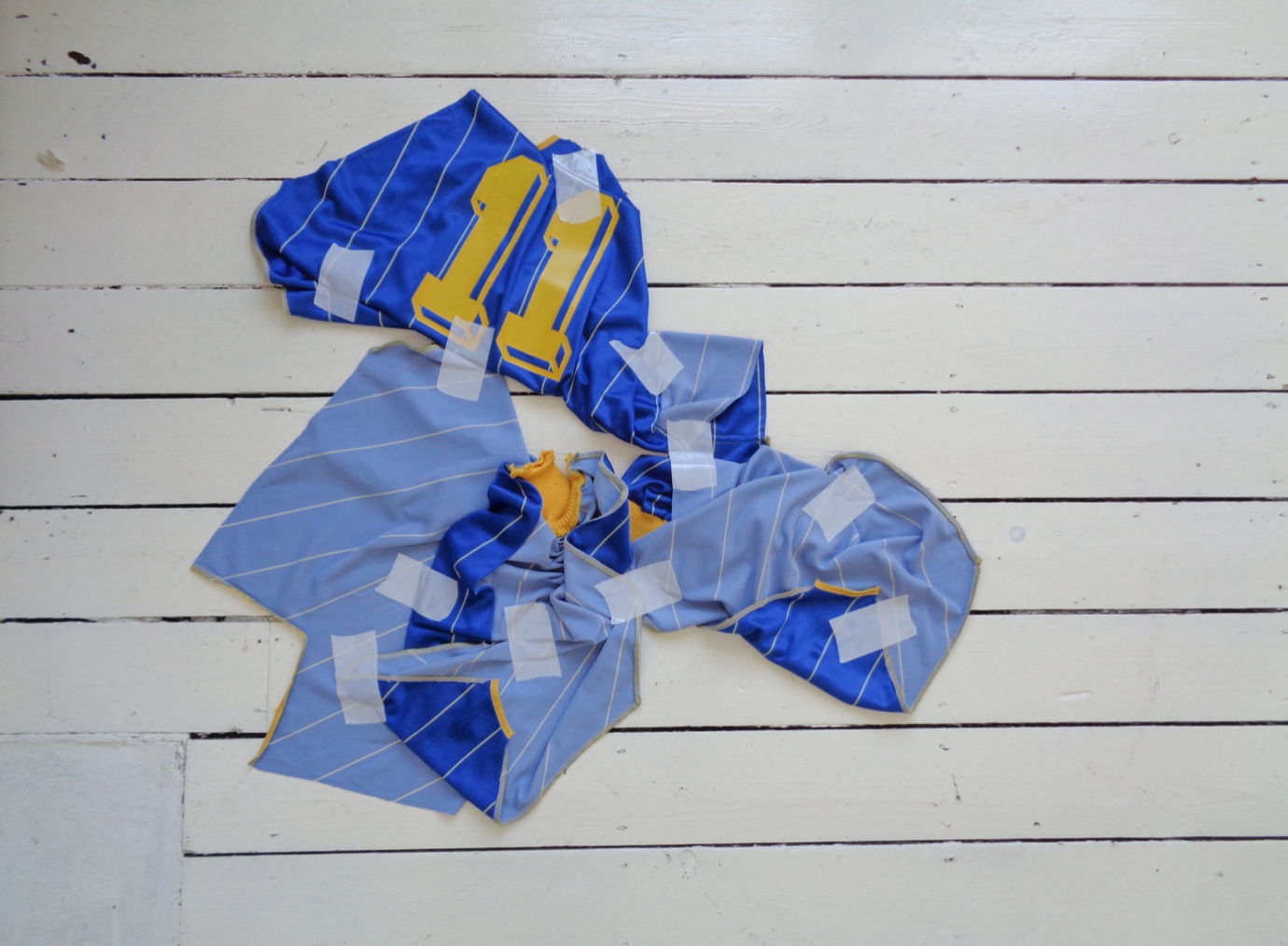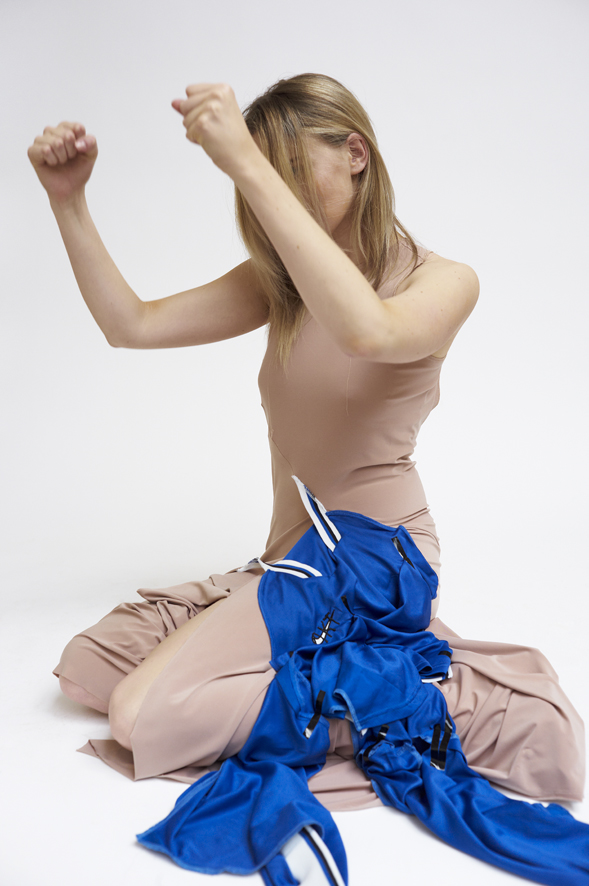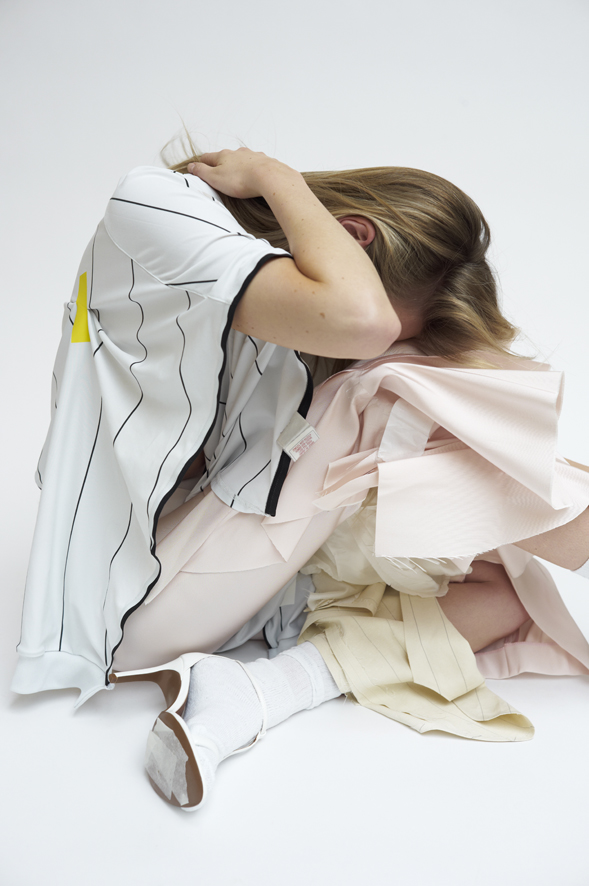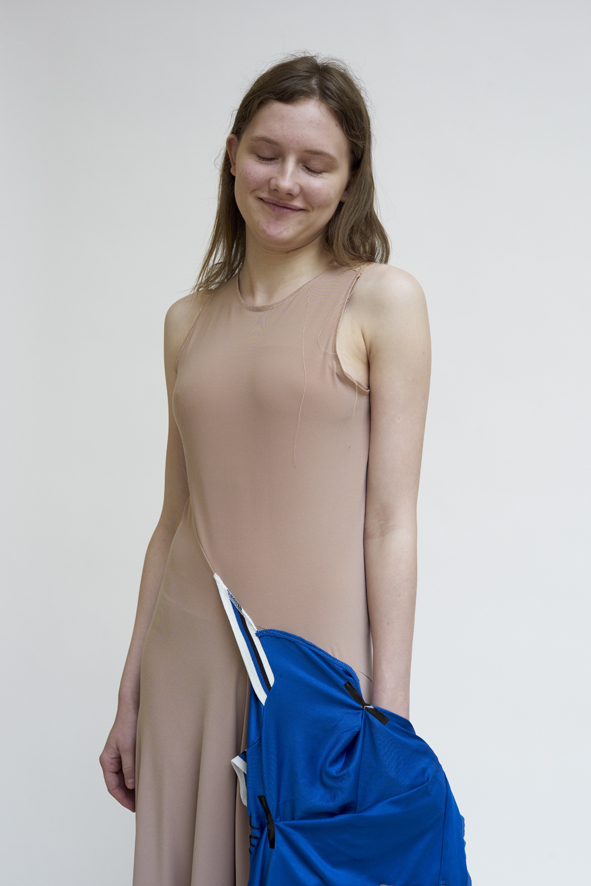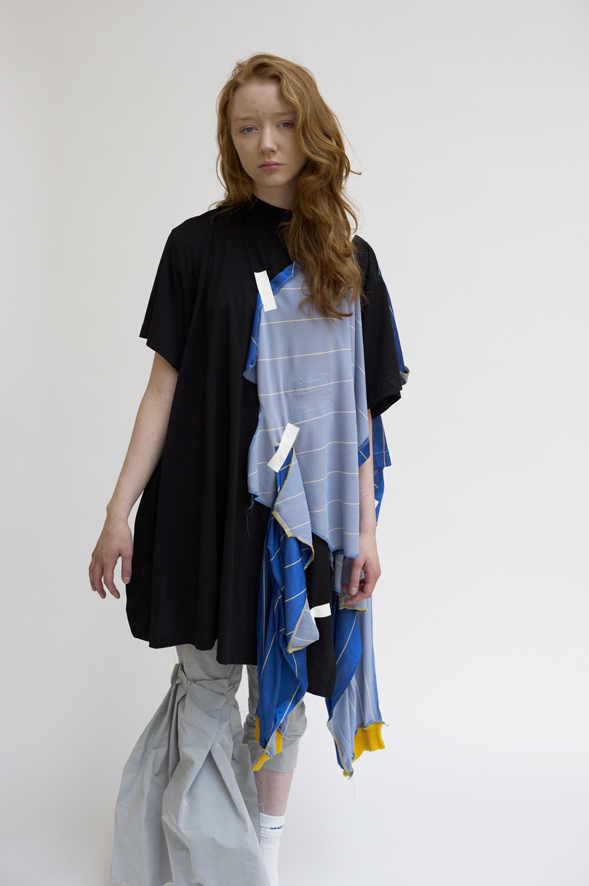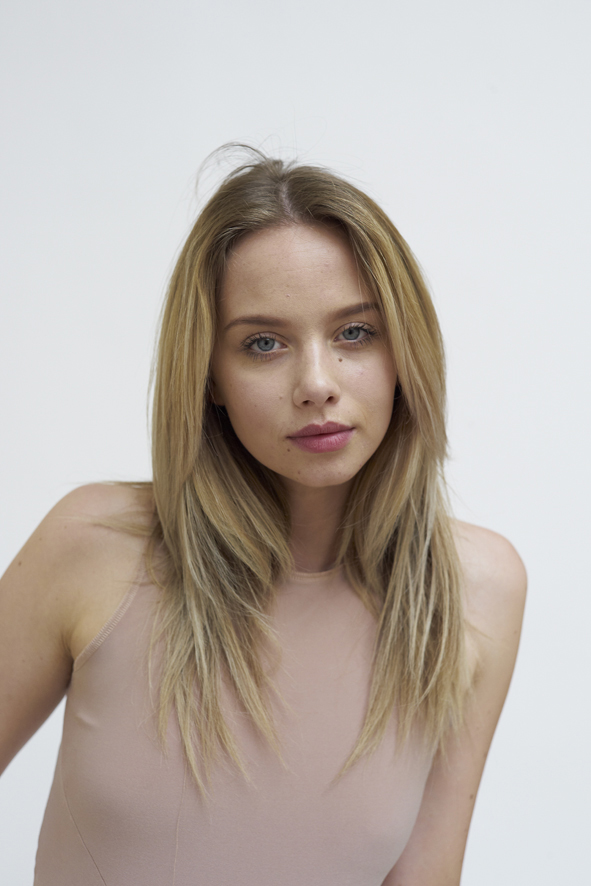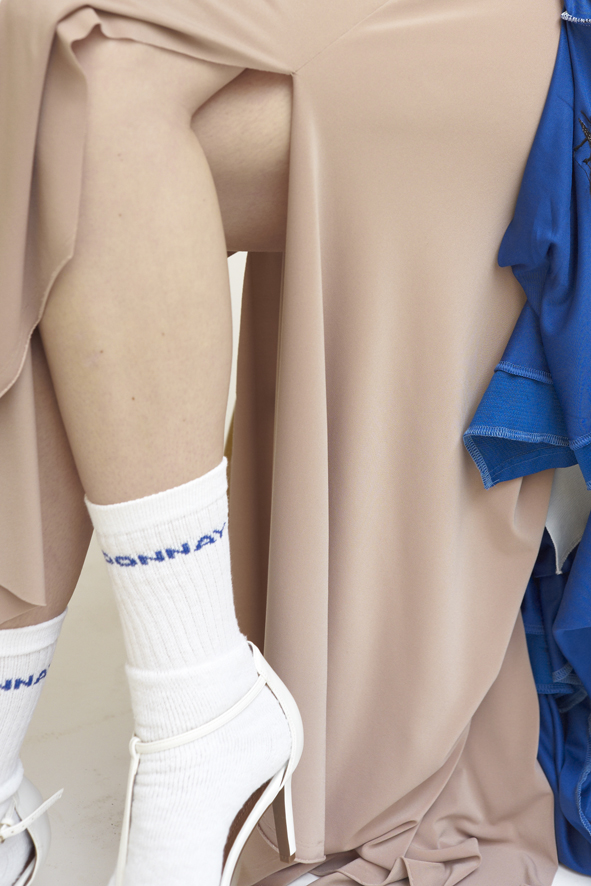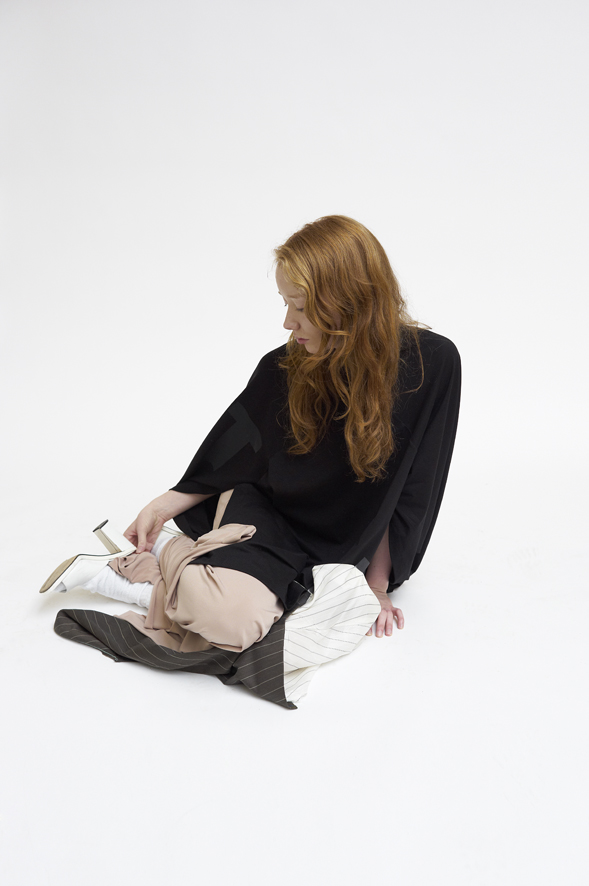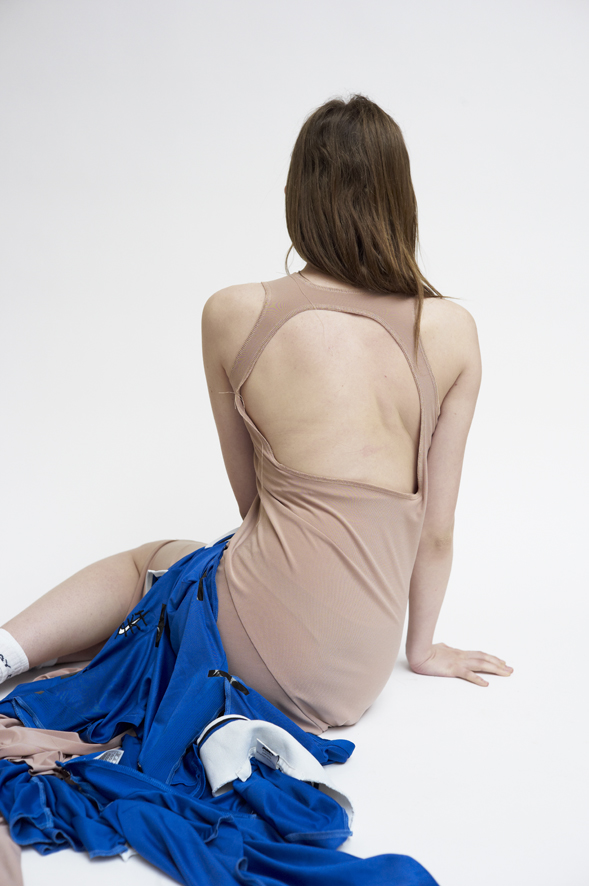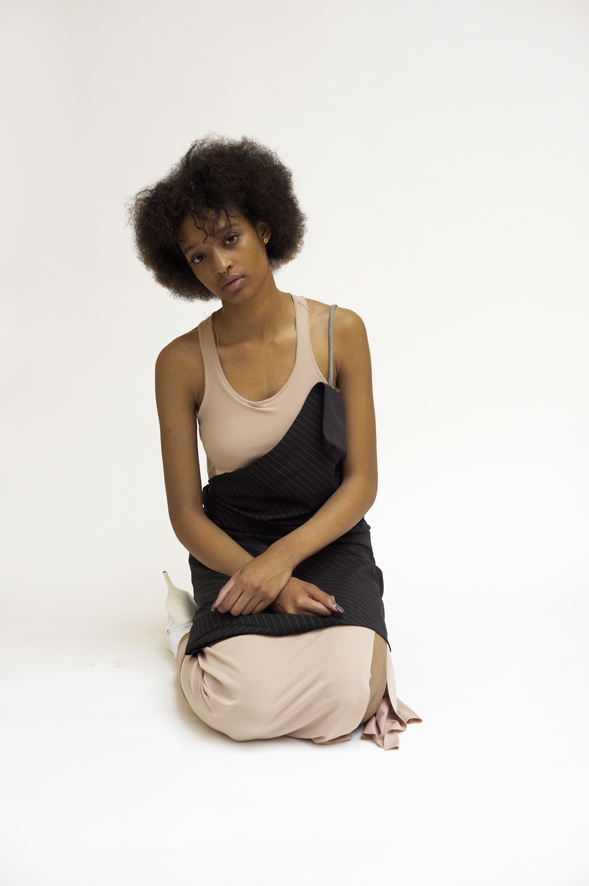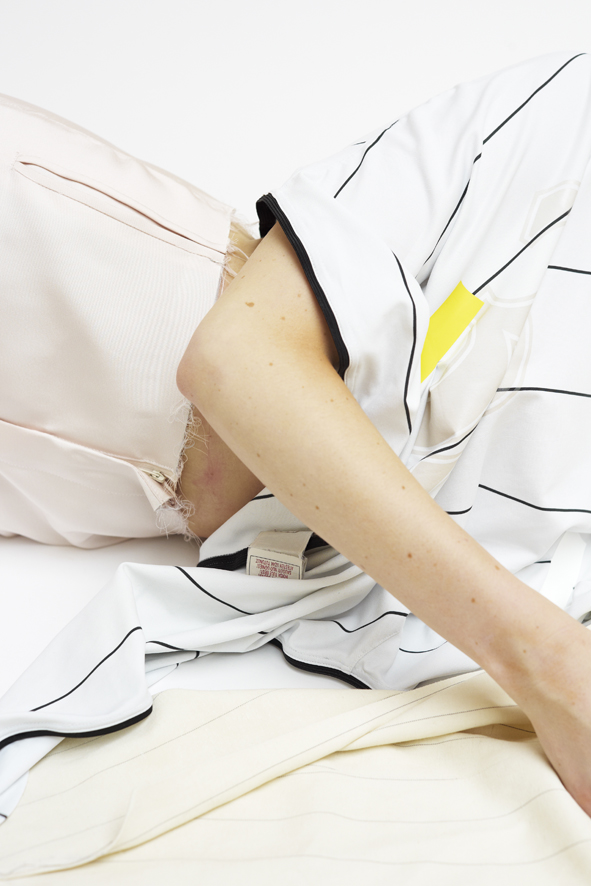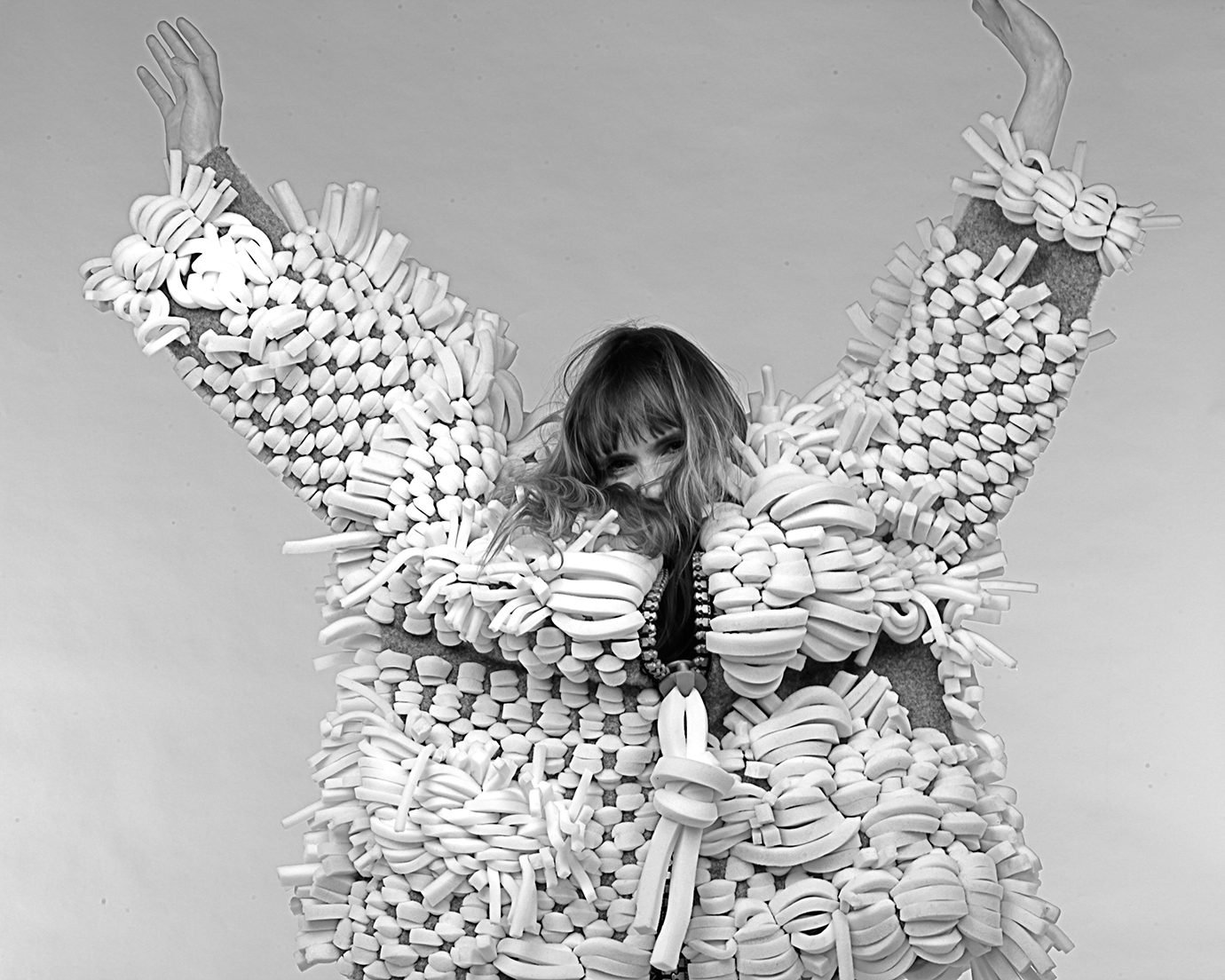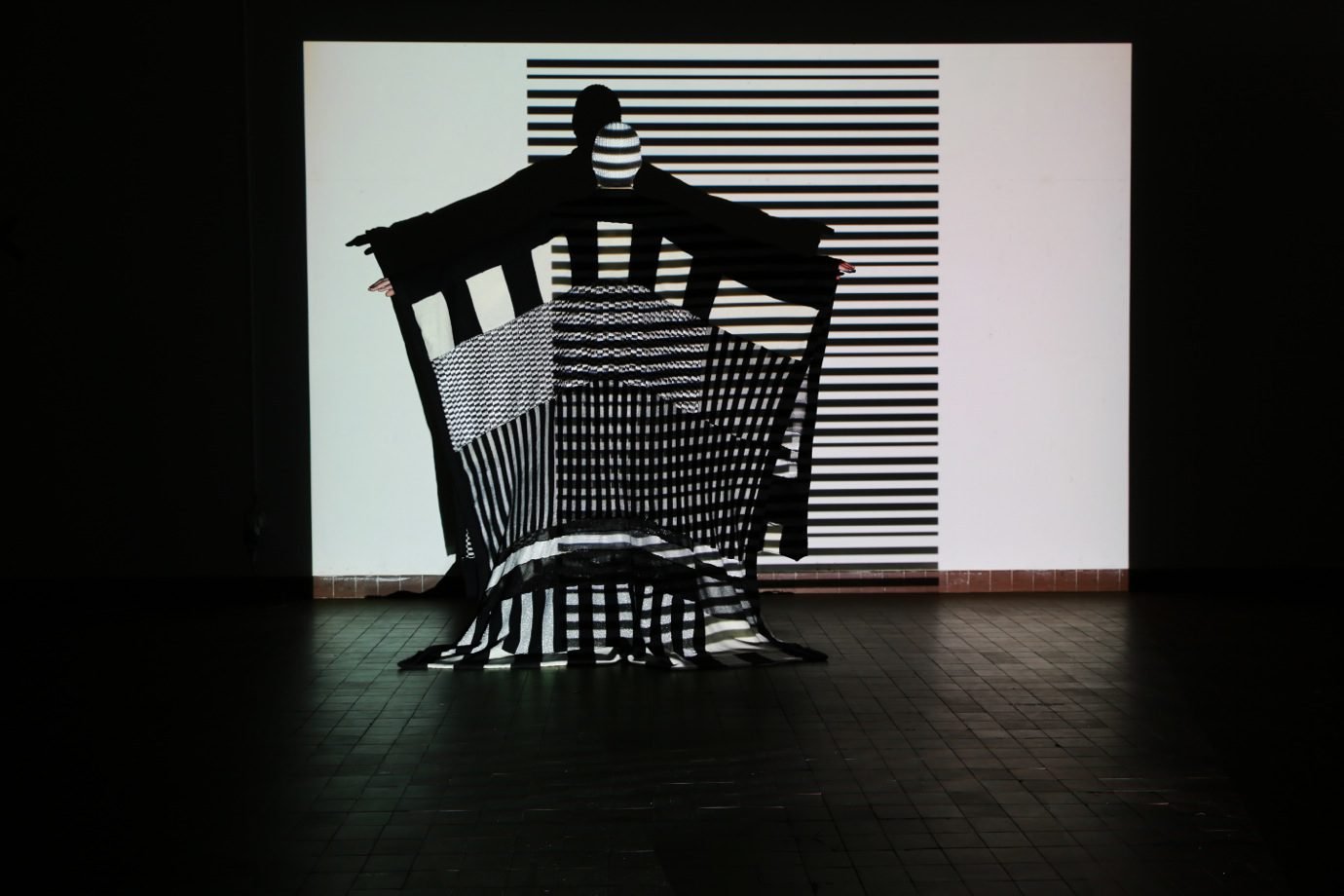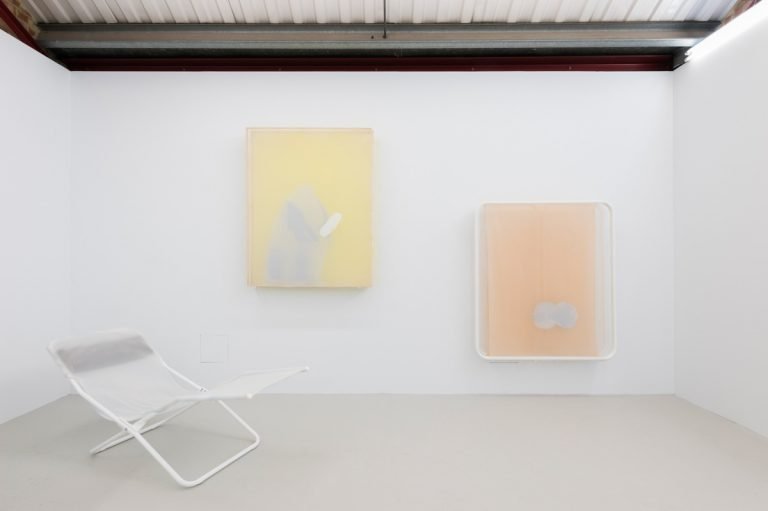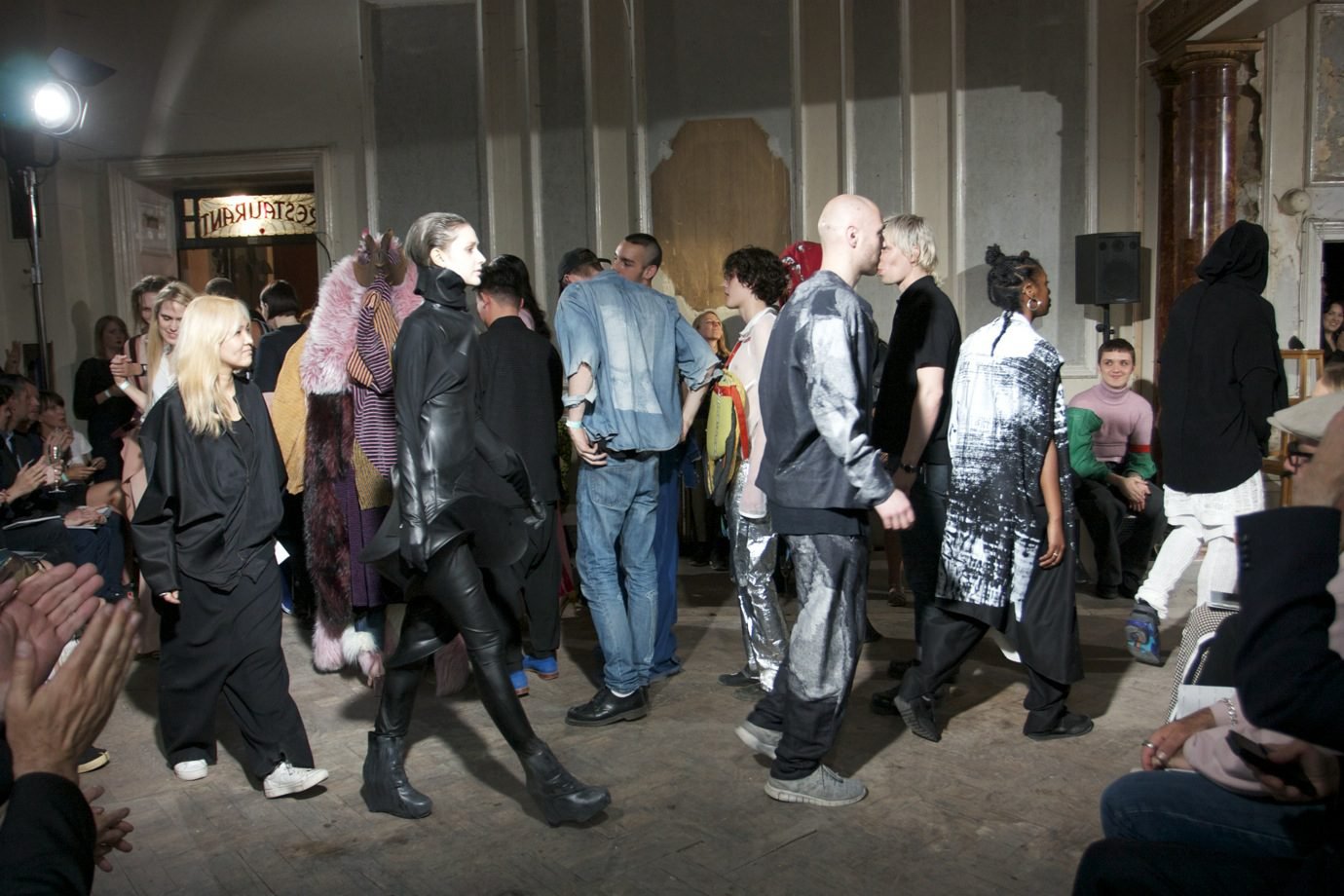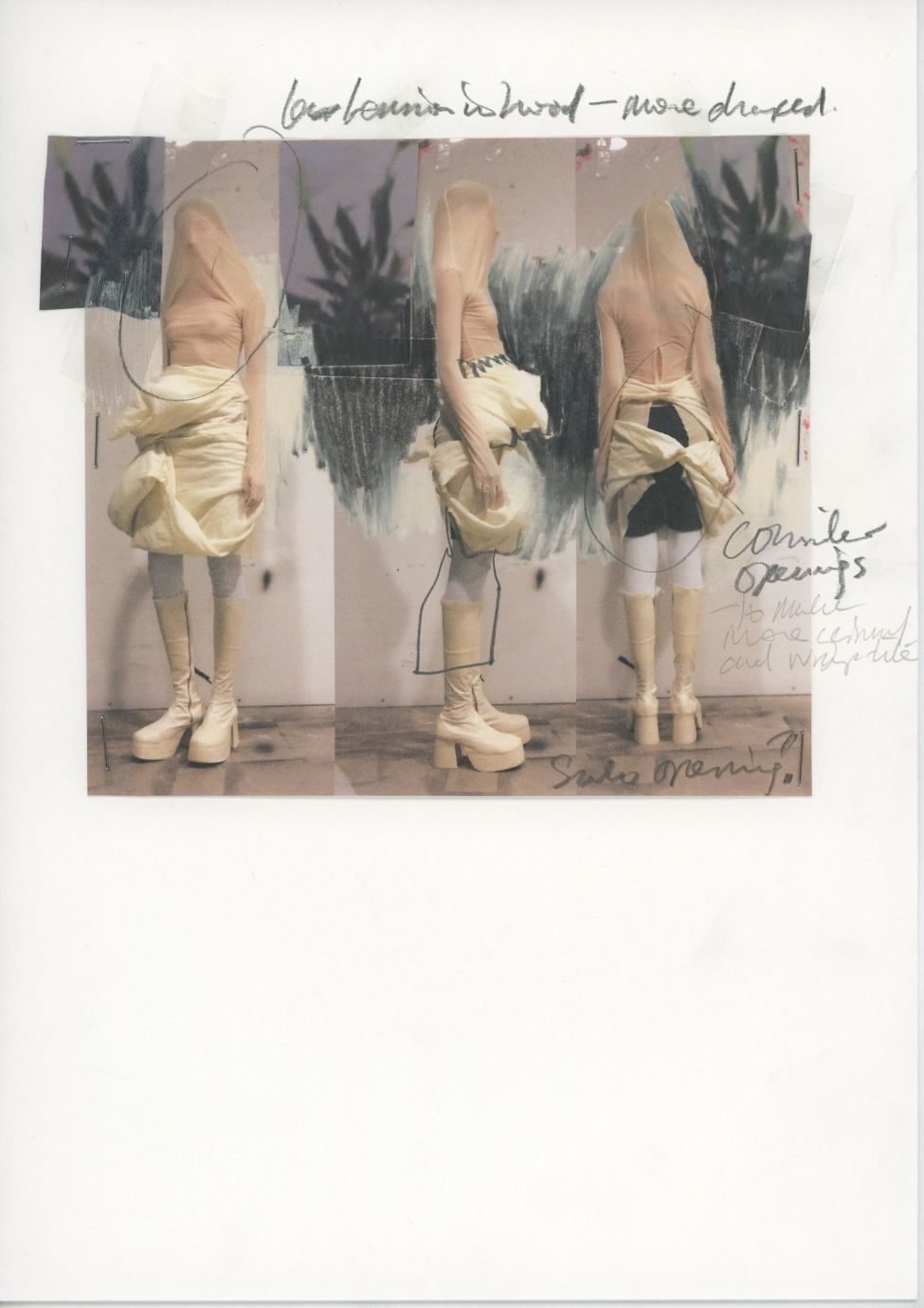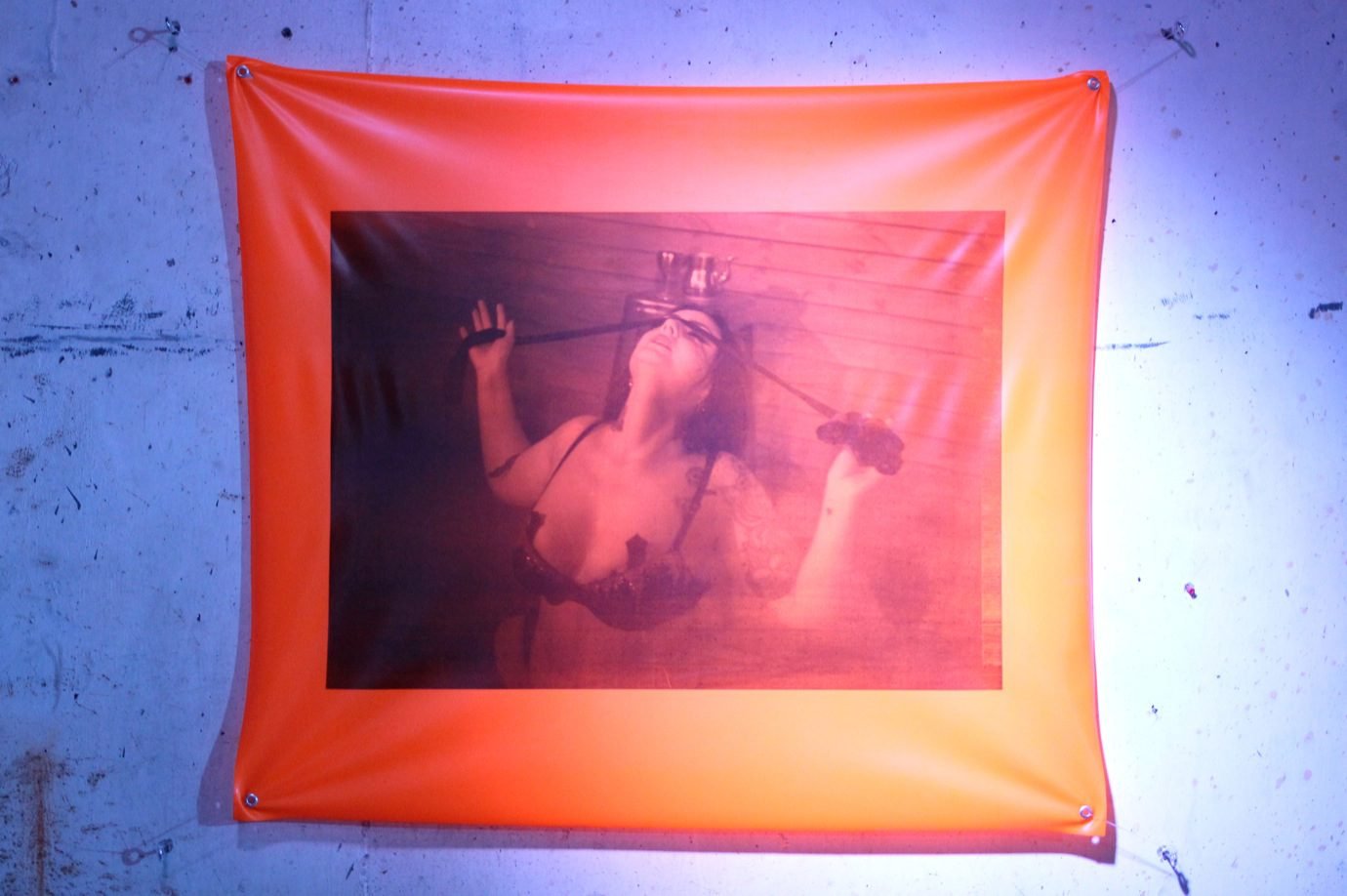Louis Gabriel: Into The Fold is “A study of the aesthetic connotations of drapery through recontextualising football shirts and the suit.” What does that mean to you?
Anne Karine Thorbjørnsen: Drapery is what I’m always working with. I’m slightly obsessed with it, the fold and its mass. It started when studying my Masters at Central Saint Martins, and since graduating I’ve been trying to understand why I’m so drawn to it… I think that very often, drapery, especially when related to fashion and clothes, always has this tacky beauty kind of feel to it and it’s all about the body and accentuating it or making it voluptuous or sensual. It’s a misconception of femininity for me, I think we have evolved beyond that a bit — beyond the harsh lines that divide what’s masculine and what’s feminine… So that’s what I’ve tried to just play with and research. I know it already exists through the likes of Rei Kawakubo and how she works with folds, and she drapes in a very raw way which challenges this sort of mainstream and commercial aspect of drapery, the “pretty-pretty”. That’s not interesting to me… I don’t think it resonates with the contemporary reality of being a woman.
Something I picked up on was the idea of uniform through football jerseys and tailored shirts; a sense of masculinity that is offset by the introduction of the separate art of drapery, which has its links to femininity… There’s a contradiction.

